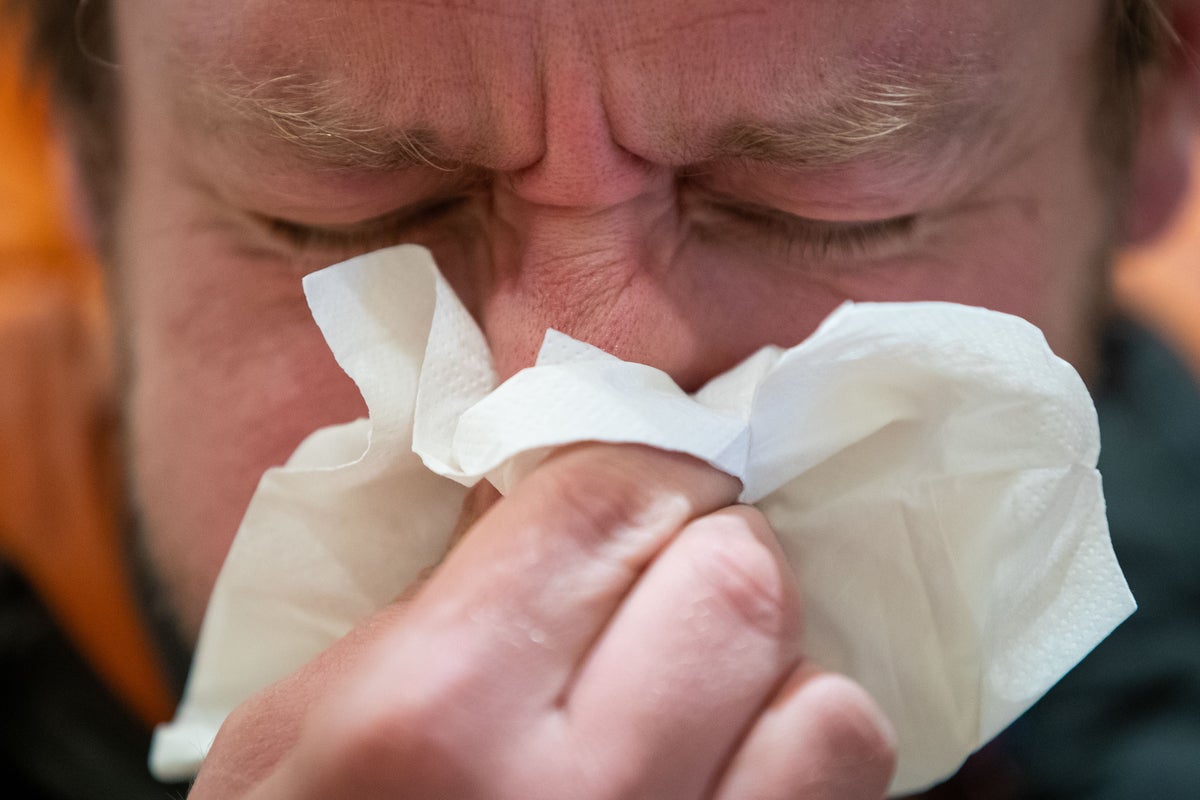
More common during the winter months, scientists have uncovered the biological reason why colds are more prevalent in colder temperatures.
A study suggests the newly discovered immune response inside the nose is suppressed by colder temperatures, and the illnesses are not more common simply because people are stuck indoors.
Scientists say this finding offers the first biological evidence for why respiratory illnesses like colds, flu and Covid-19 are more likely to spike when the temperature drops.
The upper respiratory tract (nose, mouth and throat) is the primary way people get infected through either inhaling the bug or depositing it with their hands.
And researchers at Mass Eye and Ear hospital and Northeastern University in America have discovered a previously unidentified immune response inside the nose that fights off viruses responsible for upper respiratory infections.
Further testing revealed this response becomes blocked in the cold.
Benjamin Bleier, director of Otolaryngology Translational Research at Mass Eye and Ear and senior author of the study, said: “Conventionally, it was thought that cold and flu season occurred in cooler months because people are stuck indoors more where airborne viruses could spread more easily.
“Our study however points to a biological root cause for the seasonal variation in upper respiratory viral infections we see each year, most recently demonstrated throughout the Covid-19 pandemic.”
A 2018 study led by Dr Bleier and Mansoor Amiji, Distinguished Professor of Pharmaceutical Sciences at Northeastern University, uncovered an innate immune response triggered when bacteria is inhaled through the nose.
They found that cells in the front of the nose detected the bacteria and then released billions of tiny fluid-filled sacs called extracellular vesicles (or EVs, known previously as exosomes) into the mucus to surround and attack the bacteria.
The 2018 study also showed that the EVs shuttle protective antibacterial proteins through the mucus from the front of the nose to the back of it along the airway, which then protects other cells against the bacteria before it gets too far into the body.
For the new study, the researchers wanted to see if this immune response was also triggered by viruses inhaled through the nose, which are the source of some of the most common upper respiratory infections.
Led by first study author Di Huang, a research fellow at Mass Eye and Ear and Northeastern, the researchers analysed how cells and samples collected from the noses of patients undergoing surgery and healthy volunteers responded to three viruses – a single coronavirus and two rhinoviruses that cause the common cold.
They found each virus triggered an EV swarm response from nasal cells, albeit using a signalling pathway different from the one used to fight off bacteria.
This is also how the researchers discovered a mechanism at play in the response against the viruses – upon their release, the EVs acted as decoys to which the virus would bind instead of the nasal cells.
Next they tested how colder temperatures affected this response. Healthy people from a room temperature environment were exposed to 4.4C (39.9F) temperatures for 15 minutes – the temperature inside the nose fell about 5C.
Researchers then applied this reduction in temperature to the nasal tissue samples and saw that the immune response was not as strong.
The quantity of EVs put out by the nasal cells decreased by nearly 42% and the antiviral proteins in the EVs were also impaired.
Dr Huang said: “Combined, these findings provide a mechanistic explanation for the seasonal variation in upper respiratory infections.”
The researchers hope to replicate the findings with other diseases in the future.
From their recent findings, the researchers can also imagine ways in which medication can induce and strengthen the nose’s innate immune response.
For example, a nasal spray could be designed to increase the number of EVs in the nose.
The new study is published in The Journal of Allergy and Clinical Immunology.







